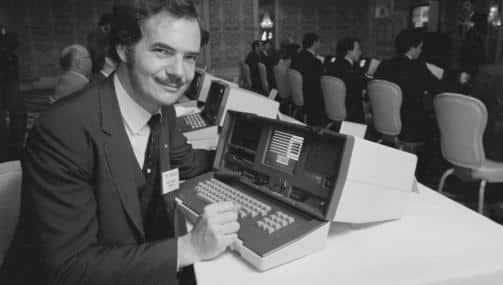The invention of laptops revolutionized the way we work, learn, and communicate in today’s digital age. In a world where mobility and flexibility are key, laptops have become essential tools for professionals, students, and individuals across the globe. But have you ever wondered who created these portable computing devices?
Early in the 1980s, a number of technologists and visionaries began exploring the concept of a portable personal computer for on-the-go use. Alan Kay, a computer scientist known for his work at Xerox PARC, was one of the key figures in the development of the laptop.
The invention of laptops has revolutionized the way we work.
Communicate and access information on the go. Although the market first saw the introduction of laptops in the early 1980s, several key figures and companies played pivotal roles in the development of this innovative technology.
Adam Osborne, an American entrepreneur and author, was one of the earliest pioneers in portable computing, often credited with creating the first commercially successful portable computer. In 1981, Osborne Computer Corporation released the Osborne 1, a 24-pound computer that featured a 5-inch display and dual-floppy drives. While the Osborne 1 was not technically a laptop in the modern sense of the word, it laid the groundwork for the portable computing industry and inspired future innovations in the field.
Bill Moggridge was another important player in laptop development.
Moggridge, a British designer, co-founded the design firm IDEO and gained fame for inventing the first clamshell-style laptop. In 1982, Moggridge introduced the GRiD Compass, a sleek and lightweight computer that featured a folding design, a full-sized keyboard, and a high-resolution display. The GRiD Compass set the standard for portable computing and influenced the design of future laptops for years to come.
Addition to individual inventors
Several major tech companies also played a significant role in the evolution of laptops. IBM, for example, released the IBM PC Convertible in 1986, which was one of the first true laptops to feature a built-in display and keyboard. The IBM PC Convertible’s success helped to popularize portable computing and paved the way for other manufacturers to enter the market with their own laptop offerings.
Conclusion
The evolution of laptops can be attributed to a collective effort rather than a single individual. While Adam Osborne and Bill Moggridge are credited with creating early versions of portable computers, it was the collaboration of various innovators and technology companies that led to the development of modern laptops. The advancements in technology, miniaturization of components, and consumer demand for more portable computing solutions have all played a vital role in shaping the laptops we use today. The concept of a portable personal computer dates back to the 1970s, and its development has been a continuous process of refinement and improvement over the years. Ultimately, the invention of laptops is a testament to human ingenuity and the relentless pursuit of innovation in the field of technology.






